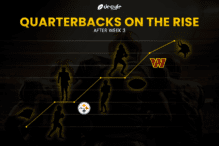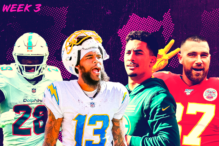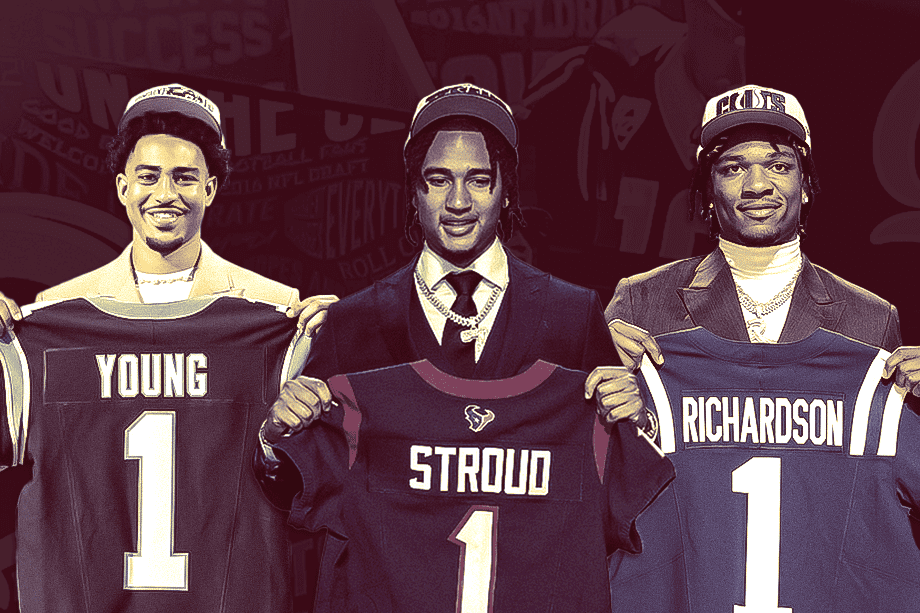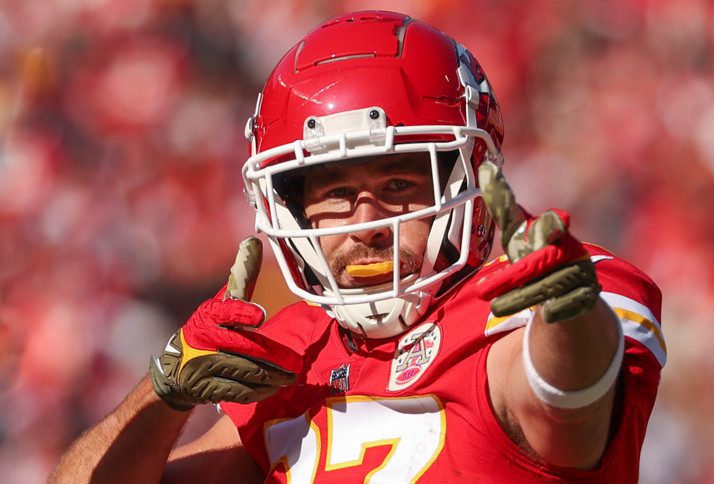

With just over two weeks until the start of the 2024 regular season, fantasy football drafts are now in full swing. The draft, as any experienced fantasy football manager will tell you, has the potential to make or break your season before it’s even begun. Fortunately, there are a range of different strategies you can utilise in order to ensure a successful draft day. Decyfr brings you seven of the most common strategies, all in one place.
What would you change about this mock draft? 🤔 pic.twitter.com/0IjsAwtwge
— Decyfr Sport (@DecyfrSport) August 5, 2024
Best Player Available (BPA)
The Best Player Available (BPA) strategy means that you prioritise selecting the highest value player, regardless of their position. While this approach helps to increase the overall strength of your team and provides you with flexibility when looking at trades later in the season, it can leave you with an unbalanced roster – for example too many running backs and not enough wide receivers, or a particularly weak QB1. As a result, this approach is one that is best utilised in leagues where trades are a regular occurrence.
Zero RB Strategy
The Zero RB Strategy focuses on acquiring top wide receivers and tight ends in the early rounds – recognising that running backs are more injury-prone. Therefore, biding your time before selecting your running backs can avoid the heartbreak that comes with a season-ending injury to a top draft pick. An example of this strategy would be targeting the likes of Amon-Ra St. Brown, Chris Olave, Brandon Aiyuk or Mark Andrews in the first three or four rounds, then seeking good value in a running back in the mid-to-late rounds – with the likes of James Conner or Rhamondre Stevenson. However, this approach risks missing out on an elite running back who can anchor your team – particularly in PPR leagues. Therefore, careful planning and good waiver wire management is essential with this approach.
The Robust RB Strategy
In direct opposition to the Zero RB Strategy, the Robust RB Strategy involves aggressively targeting top-tier running backs. In PPR leagues, running backs who are active in both the pass and run game, are often the most consistent point producers – in essence becoming the bedrock of your lineup on a weekly basis. An example of this strategy would be selecting Breece Hall and Travis Etienne Jr. or Derrick Henry in the first two rounds. Given the drop in productivity amongst wide receivers and tight ends taken outside the first few rounds, this approach can leave you with a much weaker wide receiver room than one may like. Additionally, given the rapid turnover of running backs throughout the season, this strategy is undoubtedly one of the riskiest.
The Late-Round QB Strategy
Selecting a quarterback in the first few rounds of a draft is an immediate sign to your competitors that this is your first season as a fantasy football manager – with experts recommending that even the best QBs in the league shouldn’t come off the board until at least the fourth round. The Late-Round QB Strategy is therefore an incredibly popular approach. This strategy prioritises other positions in the early rounds, as good quarterbacks can often be found in later rounds, due to the notable depth at the position. Last year, for example, Jared Goff was one of the last quarterbacks off the board in a lot of drafts and yet finished as a top 10 fantasy QB. That said, sometimes panic sets in and there will be a run of quarterbacks getting drafted – leaving you without a consistent high performer at the most important position in the game. This strategy requires confidence in identifying late-round quarterbacks who will outperform expectations.
Which QBs are you targeting in your drafts this year? 👀 pic.twitter.com/qReXaHttqb
— Decyfr Sport (@DecyfrSport) August 12, 2024
The Streaming Defense and Kicker Strategy
The Streaming Defense and Kicker Strategy avoids using early or mid-round picks on defense and kickers – both of whom are less predictable and have less impact, thus freeing up picks for skill positions with higher scoring potential and consistency. While it requires diligent weekly management, a lot of the most successful fantasy managers will adopt this approach and change both their defense and kicker every week – according to the strength of their upcoming opposition. Do be aware, however, that this comes with a risk of waiver wire competition for top streaming options.
Handcuffing
Handcuffing provides insurance for your top running backs by drafting their backups in later rounds – reducing the risk of losing significant production if a starting running back gets injured. For example, San Francisco 49ers running back and reigning Offensive Player of the Year Christian McCaffrey is currently carrying a calf injury. While this isn’t something that the 49ers are overly concerned about, it might cause him to miss time later in the season – very concerning for fantasy football managers looking to draft the star RB first overall. Therefore, also selecting his backup, Elijah Mitchell, in one of the later rounds could be an effective way to implement this strategy. That said, this strategy does use up valuable bench spots that could be used instead for high-upside players from other teams. Remember, handcuffs could be incredibly unproductive should the starter remain healthy.
Which of these wide receivers leads your team to fantasy football glory in 2024? 🏆 pic.twitter.com/8LQCu5sLs2
— Decyfr Sport (@DecyfrSport) August 16, 2024
Tier-Based Drafting
Tier-Based Drafting can be an incredibly useful tool for fantasy managers. The strategy involves grouping players into tiers according to their talent and their projected productivity – then drafting them accordingly. This approach allows managers to make more informed decisions by identifying drop-offs in talent whilst simultaneously increasing flexibility – as managers target multiple players within the same tier rather than being locked on one specific player. However, this strategy requires extensive pre-draft preparation to accurately tier players. Even with a number of tiers available online, the level of variation from expert to expert would suggest using these prescribed tiers merely as a guide will likely stand fantasy football managers in good stead.
Let us know which strategies you’re looking to implement during your fantasy football draft in 2024.
https://decyfrsport.com/fantasy-football-draft-strategies/
Copied!































































































































